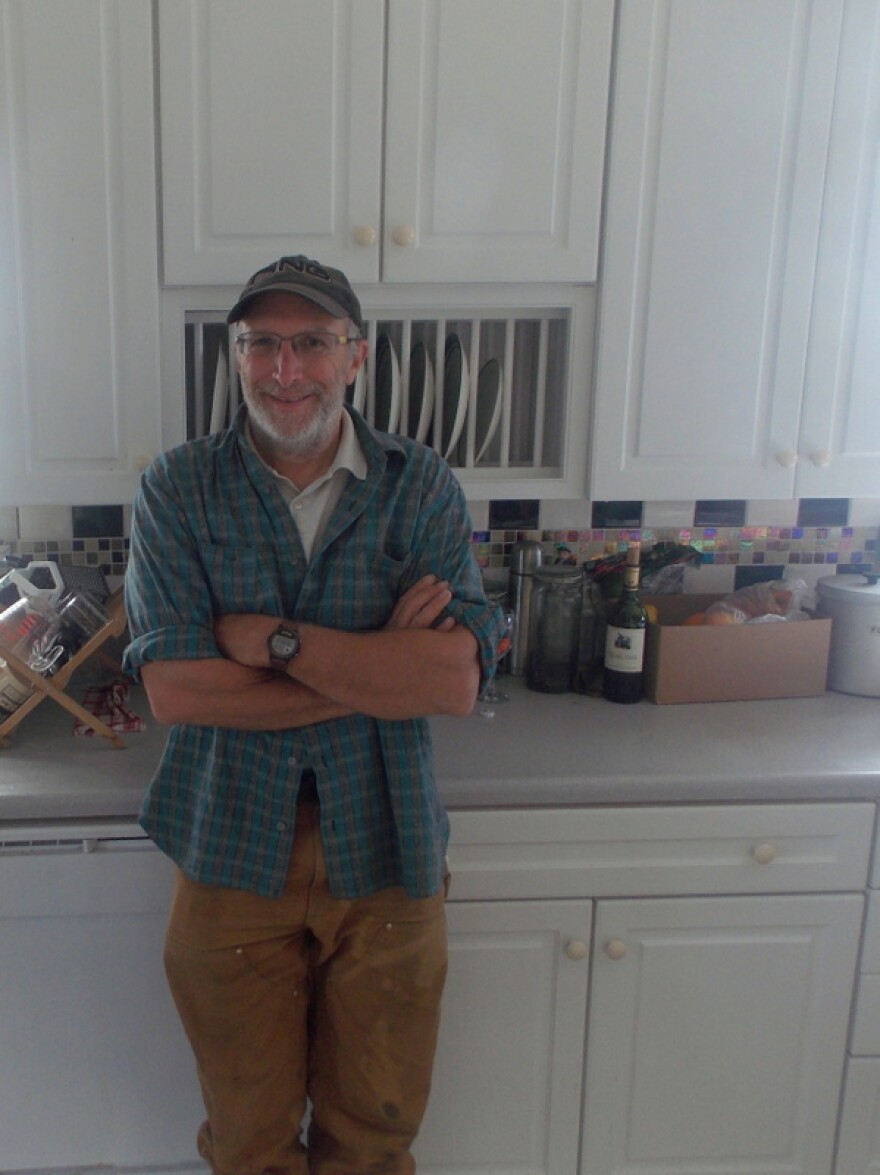For most of the summer the three people who live in Five Finger Lighthouse only have each other and the local wildlife for company.
They’re there to look after the lighthouse and do research on the humpback whales who surround the island. But that costs money. So for the first time this year they invited a cruise ship, laden with yoga loving tourists, to ferry its passengers onto their rocky shores.
Five Finger Lighthouse sits on an island so small the humans, animals and birds live in a kind of reluctant harmony. Birds sing as waves lap against the shore.
"Everybody knows everybody else," says lighthouse keeper Paul Sharpe. "The crows and the eagles and the marine mammals we all sort of put up with each other."
Sharpe is the lighthouse keeper for the 2015 summer season. His two other human companions on the island are his brother Fred, who’s a humpback whale researcher, and a college senior studying for her senior thesis.
Sharpe lives most of the year in Oregon but recently became an empty nester and decided he wanted to spend his summer somewhere a little different. But while he’s proud to be known as lighthouse keeper, he says actually, the term is a bit of a relic...
"...because really we take care of everything but the light," Sharpe says.
The Coastguard maintains the light, but the ‘everything else’ Sharpe is talking about is his home for the summer.
The view from here is all rainforest covered mountains, snowy peaks and wild seas. But the lighthouse itself is something of the more homey variety.
"OK, so this is our main living area. We have the galley, the kitchen area. This has come a long ways from what it used to look like."
That’s because with money raised by the Juneau Lighthouse Association, a nonprofit that fundraises for the island, and a bit of love and care, people like Paul Sharpe have made this into a home. Bottles of wine are laid out on the counter, wooden snowshoes hang down from the ceiling and old pictures of suitably bearded former lighthouse keepers adorn the wall.
Keeping a place like this livable and accessible is difficult. So Sharpe is looking for ways for the lighthouse to reinvent itself.
And today the reinvention begins.
A radio crackles to life as a cruise ship captain looks for a hospitable mooring point nearby.
And then....they come.
There are about 70 tourists, replete with sun visors, backpacks and…yoga mats. The island’s never had this many visitors on it before. One of the reasons is it’s not easy to access. The cruisers have to clamber across hidden rocks while the skiff’ captain negotiates the rising tide.
Tourists and their handlers make their way to the island.
A couple of those tourists have come all the way from the Berkshires in Massachusetts. Joel Grossman helps his wife Judy take her shoe off after she slipped getting off the boat
"Would you like to take your sock off?" Joel asks.
"No... because it's wool, I think it’ll dry," Judy chirps back.
She might have got her foot wet but she isn’t fazed.
"It’s fascinating and I’m not a young chick and to be able to do this," Judy says. "When I looked at what we had to do I thought I’m not going to be able to do it but then I decided I wanted to do it and I’m doing it."
They head into the Lighthouse which is now teeming with people.
There are sweatshirts and postcards laid out on the table. Paul Sharpe’s even turned into a businessman flogging souvenirs.
"I just sold a t-shirt actually," Sharpe says, somewhat amazed.
But it’s not just the shop that’s causing excitement. Through a door at the back of the lighthouse the tourists wind up a steep, stone spiral staircase until they reach the light that still warns ships off the island’s forbidding rocks. Judy Grossman’s granddaughter Lily is an 11-year-old New Yorker who’s just made the trek up to the top of the light.
"I don’t think I’d like to go up those stairs every day," Lily says. I ask her if she has an elevator in her building in New York.
"Yes -- we have four! I barely ever climb the stairs," she laughs.
Both the tourists and the lighthouse are trying out something new. And Paul Sharpe says in the long run this is how this place and the whale research that goes on here will survive.
"This is how we funded our replacement hydrophone after it got taken by a sea lion. It’s actually really important for us. The more the merrier. You know in a couple of hours they’ll be gone, it’ll be really quiet here and we’ll be all by ourselves."
For now though, they’re still here and, let’s face it, the only way to wind down after a few hours on a craggy outpost in the middle of Frederick Sound is ….with a mass yoga session on top of the helipad.




